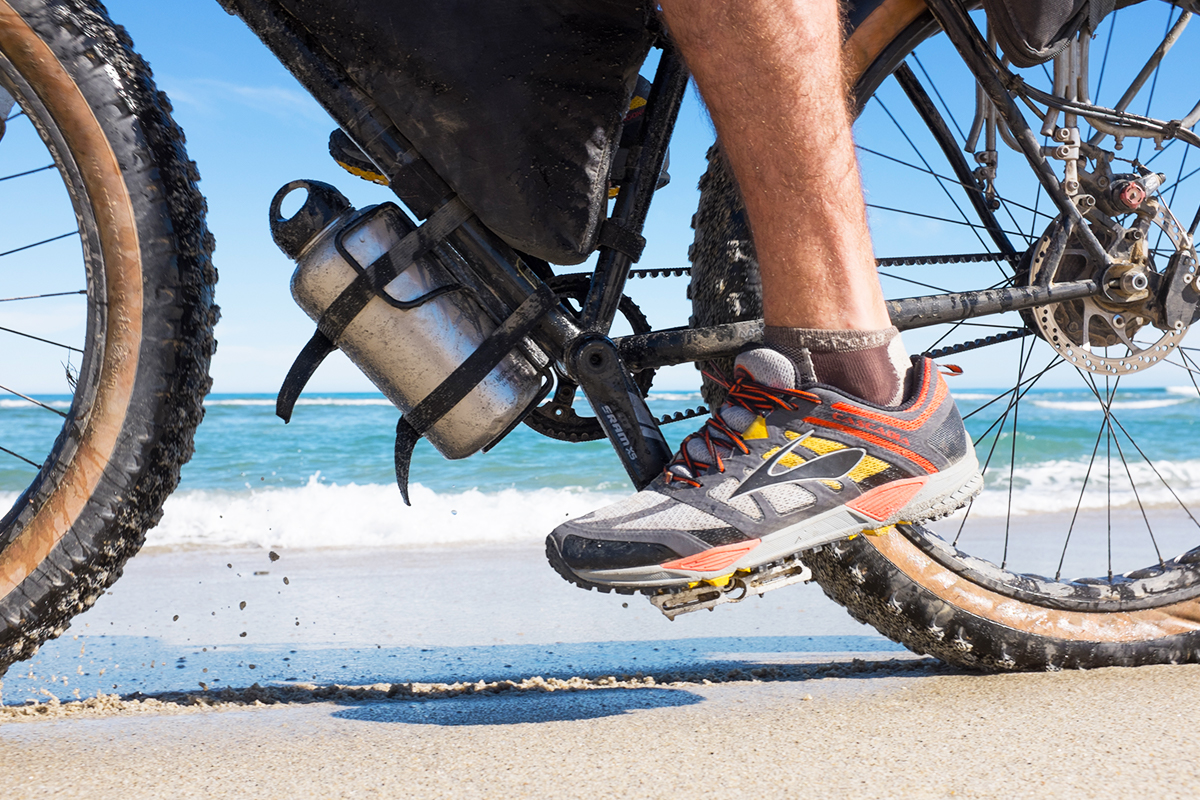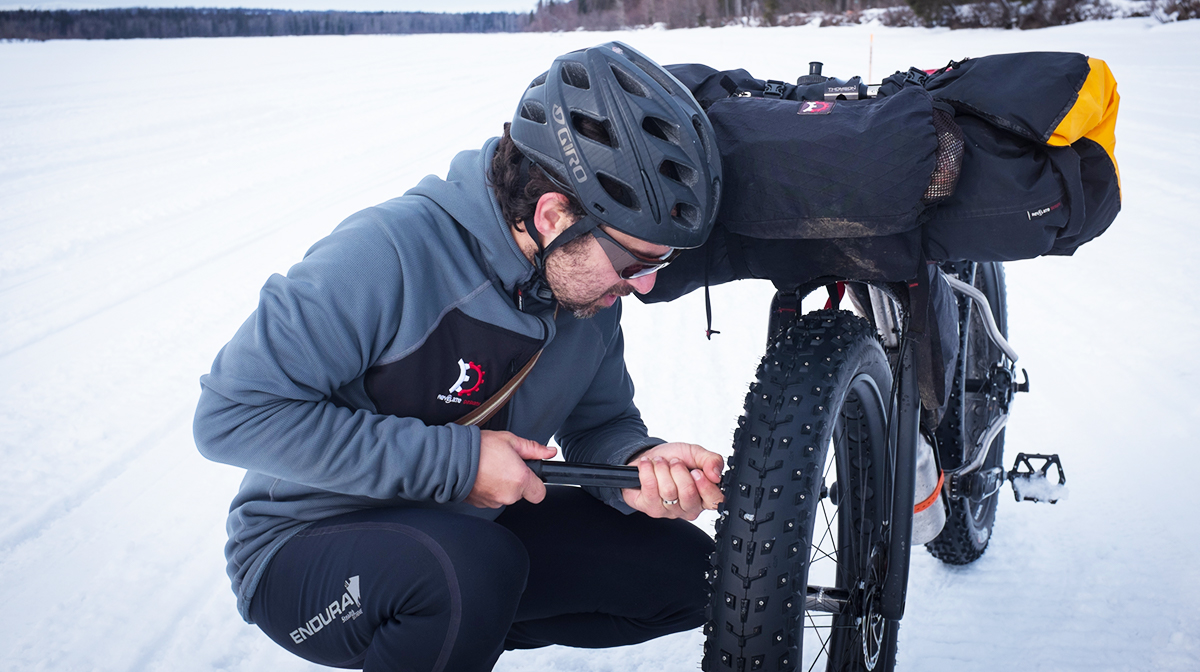Fat Bike School: Getting to Know BIG Wheels and Tires
Fat bikes have changed dramatically since the first production frames hit the market over 10 years ago. New materials have made a big impact on total bike weight while 1x drivetrains make room for larger rims and tires with less weight.
But the biggest changes have taken place in wheel technology. Go farther, ride in more challenging conditions, and have more fun.
The essence of a fat bike is its rims and tires. Fat tires range in size from about 3.7in. to 5.2in., typically mounted to rims measuring 50–100mm. The resultant range in tire volume is huge. Narrower tires are best suited to groomed snow riding and racing, touring desert tracks, or lighter riders who require less flotation.
The widest tires mounted to 100mm rims are best for soft snow, backcountry beach and desert expeditions, or larger riders who need a little more support. Some of the greatest new technologies in fat biking aim to reduce wheel weight and make fat biking just a little easier.
Tires
First, select the approximate tire size that suits your ride plans. If you are unsure what size works for you and you plan some off-trail adventures on sand or snow, go bigger. If you mostly plan to ride groomed snow trails and summer dirt, 4.0in. tires should be fine.
Next, consider the tread pattern. Large, widely-spaced knobs provide more traction but are slow rolling. Traction and speed are often working in opposition to one another, so the feeling of security from a high-traction tire might come at a compromise in rolling efficiency. Conversely, super-fast fat bike tires are mostly useless in true fat bike terrain but might be well suited to riding dirt in the summer.
Casing weight and construction is another important consideration. Tubeless-ready tire casings should be used whenever tubeless installation is planned. Note: reinforced tubeless-ready tires are strongly recommended in the desert!

For winter riding where puncture risks are minimal, lightweight models are preferred to improve performance at low tire pressure.
Tubeless wheel systems are becoming more common in winter as the technology becomes more reliable. All new bikes come with tubes installed, and only some fat bikes are sold with tubeless-ready equipment, although that will likely continue to change in the next few years.
High-quality studded tires are available in 4.0in. and 4.6in. sizes from 45NRTH and Terrene — both brands are recommended.
For winter riding, especially urban commuting where icy streets and loose snow may be present, a studded fat bike tire is an unparalleled tool.
These tires come at a price, however, starting at around $200 each. Thankfully, when snow and ice are present, one can expect minimal wear on the studs and rubber knobs, so the tires can be used for multiple seasons.
Rims
Select a rim width to suit your intended ride plans. Most bikes come with 80–90mm rims. Narrower rims are less useful in soft conditions but will be more nimble if using the bike as a general-purpose all-terrain bike in summer. Wider rims are recommended for larger riders who seek backcountry rides in any season.
Most fat bike rims are made from aluminum and feature a singlewall or hybrid construction with weight-saving cutouts along the center of the rim. In the last few seasons, several aluminum rims such as the SUNringlé Mulefüt and the Surly MOBD have brought tubeless-ready designs to the entry-level fat bike market.
At the higher end, wide carbon rims save a substantial amount of weight, and when paired with tubeless tires, remarkably light fat bike wheels are now possible, with complete bikes coming in under 20 lbs.
Tubeless Technology
Who needs tubeless tires? If your fat biking plans include desert riding or mountain biking with a dash of backcountry overlanding and bushwacking, tubeless tires are worth it. Most mountain bikers these days are riding tubeless wheels to resist punctures, improve rolling efficiency, and lower total wheel weight.
If you plan to ride in the winter when puncture risks are minimal, tubeless wheels are not essential, although the improved efficiency is still worth strong consideration.

Top fat bike racers are riding ultralight carbon wheels with tubeless tires, but lots of everyday riders appreciate the lighter ride too. Up to a pound of weight can be removed when converting a fat bike to tubeless, and additional mechanical efficiencies are gained by removing the tube.
Deep backcountry winter adventures may be best served by a conventional tubed system. Riding in sub-zero temperatures in the dark is a bad time to discover that your wheel system doesn’t work at 2–3 PSI.
Pack a Pump and Experiment!
Operating pressures are widely variable depending upon tire size, riding conditions, and the rider load. On many rides, adjusting tire pressure will improve flotation, traction, and suspension. Bring a small, high-volume pump made for mountain bikes or fat bikes, and learn what pressures work for you.

